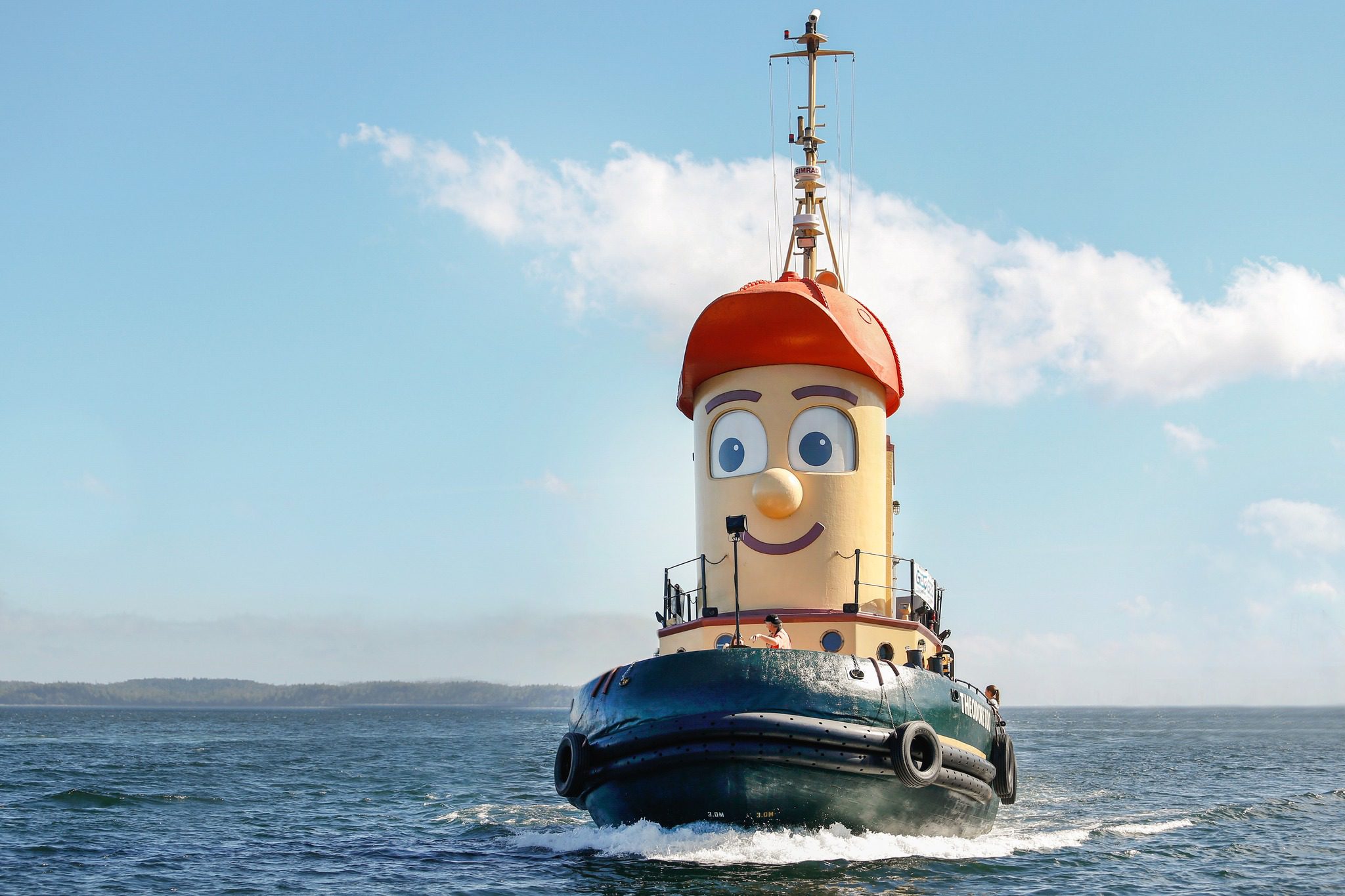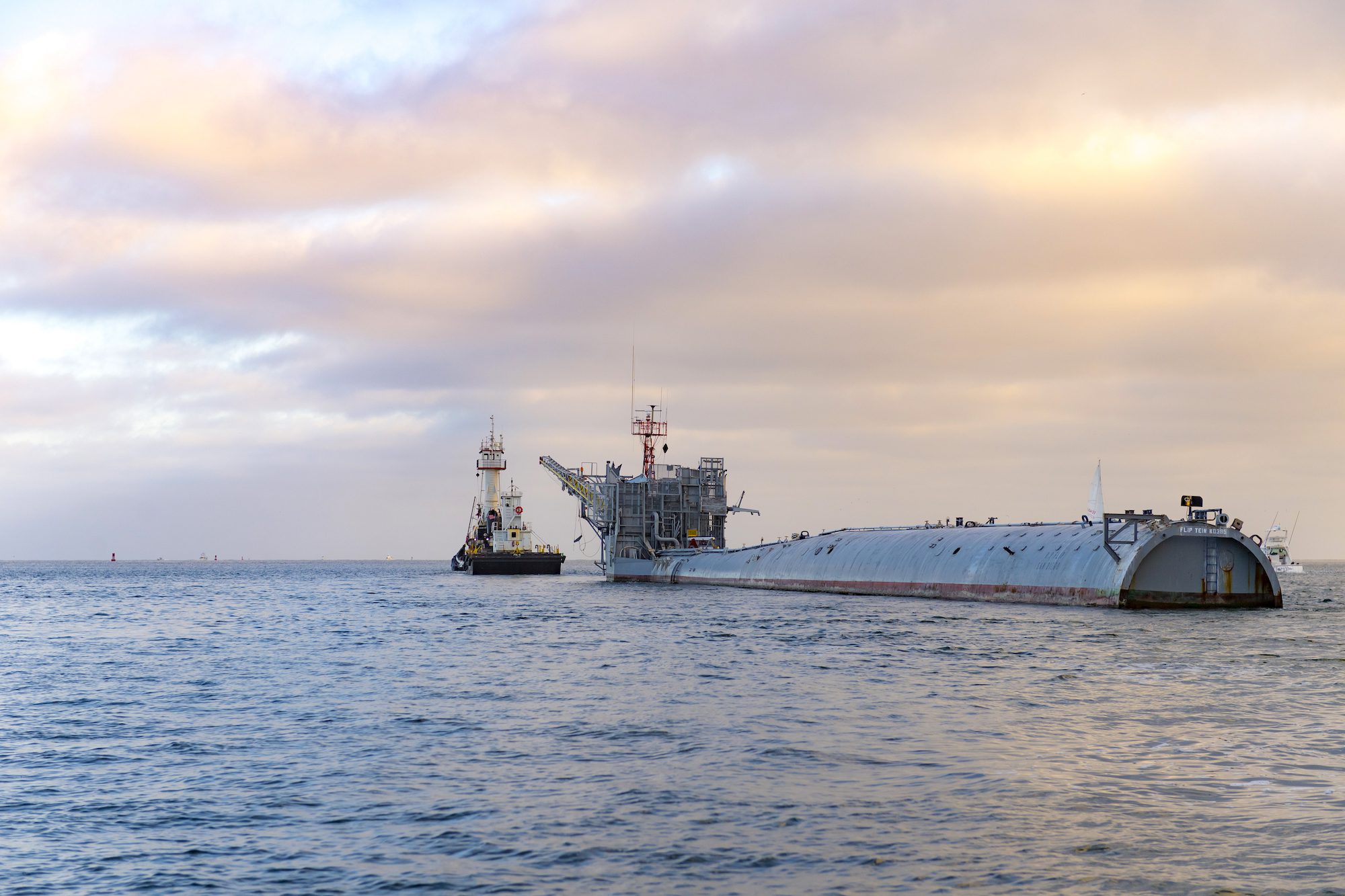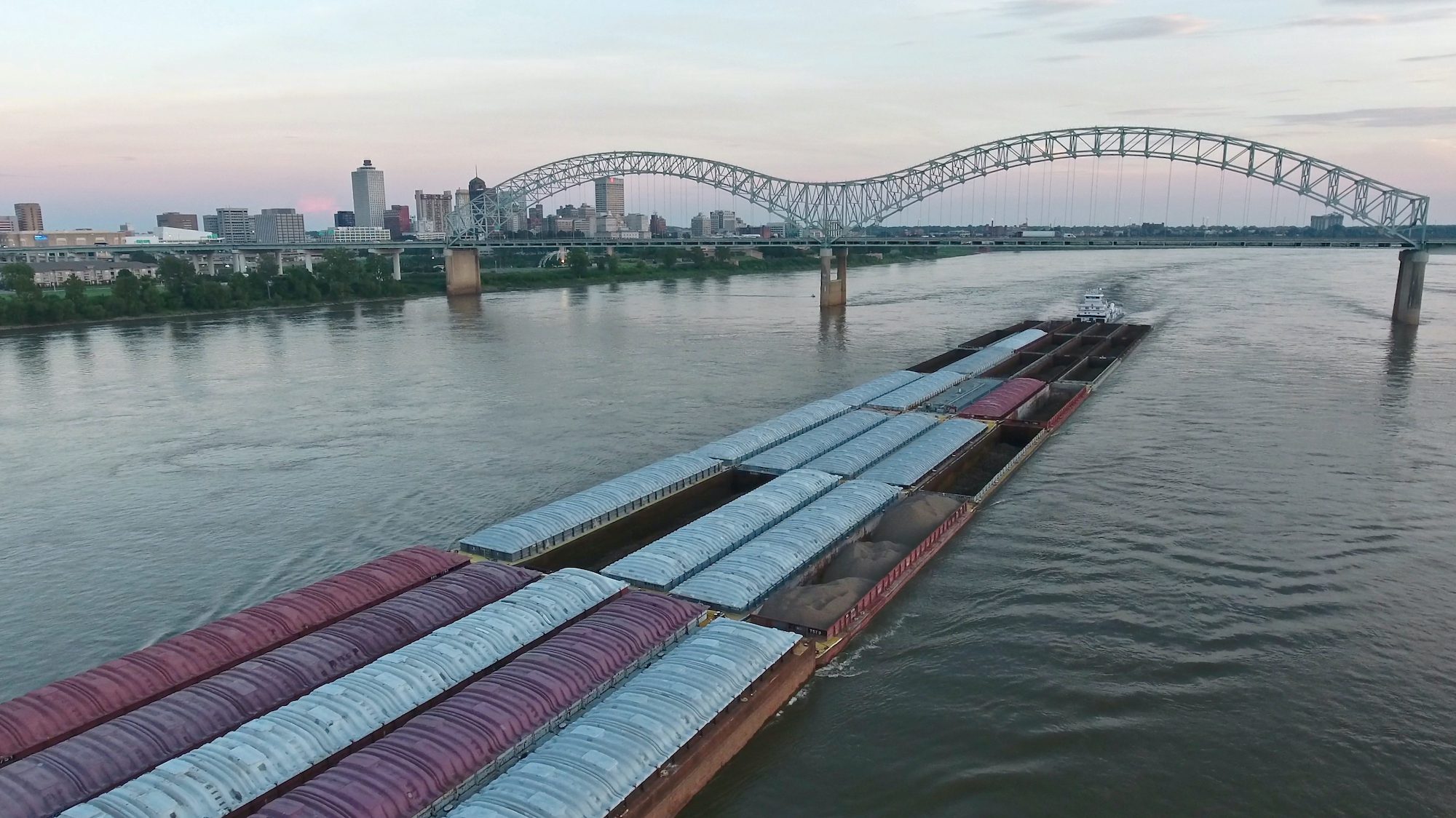CSCL Indian Ocean aground on the Elbe River, February 5, 2016. Photo credit: Central Command for Maritime Emergencies
By Capt. George H Livingstone,
The recent grounding of the Ultra Large Container Vessel “CSCL Indian Ocean” got me thinking again about the relatively recent, quantum leap of container vessel size trading the world’s oceans. I’ve written about the subject before but the grounding of “Indian Ocean” on the river Elbe put international attention back on the subject. To brief the reader, “CSCL Indian Ocean” (19,100 TEU) had a hard grounding along the River Elbe while en-route upriver to Hamburg, creating a massively difficult situation. Unfortunately the ship grounded at high water and initial attempts by tugs to refloat her failed. Finally six days after the grounding and using 12 tugboats, the ship was refloated during a Spring (very high) tide. It is far too early to discuss either the cause of the grounding or the subsequent attempts to refloat the ship; give the stakeholders involved time to digest and distill all that occurred in this event. It does make one ponder, however, the increasing size of container ships worldwide; when is too big, too big?
As far back as the mid-2000’s, at the beginning of the “Ultra Large Container Ship (ULCV)” concept, caution has been expressed. In 2006 the World Maritime University published a paper by Fragkoulis Evengelos “Ultra large Container Vessels; Technical Implications & Solutions for ULCV’s and Port Facilities”. In it the author concludes “ULCV’s might be the most common design in the future. The 15,000TEU plus or ‘Max’ size seem to be extreme solutions with extreme risks as well.” “The big problem, however, is the adaptation of port terminal facilities. As has been already stated, the investments needed are huge, which create doubts whether they can be affordable or not.” Technically doing the needed port infrastructure changes are possible, economically it becomes much more complicated.
In a September 2014 “Risk&Insurance” article, Gregory Morris wrote “Supersized Risks; larger ships using standard ports means less room for error”. “With the coming of megaships, newer tonnage Panamax (300M) ships are being moved on to runs that were traditionally considered feeder runs. This means larger vessels in smaller ports. The result is less room for error.” That trend has only continued to leading to large and larger ships calling at ports that have unchanged infrastructure for the most part.
A September 2015 Journal of Commerce (JOC) article by Editor at Large Peter T. Leach identified warnings by insurers on ships sizes. “Marine insurers that underwrite policies for Ultra Large Container Vessels are assessing the many problems they present and question whether they can handle potential losses.” “As most container lines order vessels with capacities of 20,000 TEU, the scale of potential risk has increased exponentially.” “The resulting claims could be astronomical.”
In my articles last year on the very serious practical problems facing the new expanded locks of the Panama Canal I sited an article by insurance giant Allianz. Capt. Rahaul Khanna, Senior Risk Consultant Marine concludes the article stating “If you think safety is expensive, then try an accident” has never been as applicable as it is in today’s shipping industry.
This writer does not know of a single, working professional mariner, whether master, senior officer or pilot that doesn’t feel the weight of responsibility resulting from the ‘sea-change’ of size over the last six or so years. Much of that burden is due to a lack of port infrastructure change in accommodating these giants. We are not pointing fingers for the many reasons stated in the beginning of this article, just pointing out the facts. The ports, for the most part, are struggling to keep up with the necessary changes needed to accommodate this class of ship. Ship size has changed too fast, leaving the professionals responsible for manning and safely moving these ships around the world holding the bag and a rather big bag it is. I can assure the reader that masters and pilots, the world over, take this responsibility very seriously and we have done an exceptional job in ensuring the safe movement of these giants of the sea. As Nick Cutmore, Secretary General of the International Maritime Pilots Association (IMPA) quoted “These ships are the largest moving objects on the planet.”
So I’ll repeat the question, “How big is too big?” I’m willing to wager most of my colleagues believe container ship size is already knocking on the door of ‘too big’. For a host of very important reasons, the international maritime community needs to review future plans regarding ULCV’s. A self-imposed cap on future ULCV size of 20,000TEU sounds reasonable and should be seriously considered by the international shipping community. Failing that, opening discussions on the subject of future ULCV container ship size should be commenced at the international level. The “CSCL Indian Ocean” hard grounding is not the fault of the professionals manning and moving the ship, it’s the fault of the entire international marine transportation community for not adequately planning for the massive change of container ships over the last 10 years. Unfortunately, I fear any mishaps regarding ULCV’s will be the blamed on the mariner as we are the ‘low hanging fruit” in the international marine transportation system. So very easy (and convenient) to throw out “Human Error” if/when ULCV events start increasingly occurring around the world. ‘Convenient’ is not what comes to mind when contemplating a future disaster with a 24,000 TEU ULCV… 1979; Whiddy Island in Bantry Bay is what comes to mind.

 Join The Club
Join The Club











